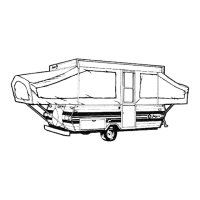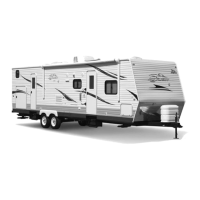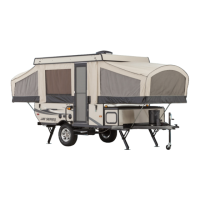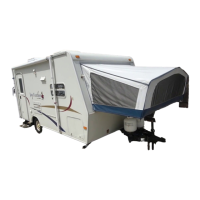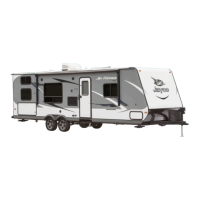SECTION 6
ELECTRICAL SYSTEM - 30 AMP
41
Your RV contains separate low voltage (12-
volt DC) and high voltage (120-volt AC)
electrical systems. All installations have been
made in compliance with the safety
requirements of ANSI standard A.1192,
National Electric Code and Canadian
Standards Association Code. Because the
wiring and circuitry is engineered into a
dedicated system specific to your RV, we
recommend you do not make unauthorized
changes or add fixed appliances yourself.
Only a qualified RV technician should attempt
to make changes or additions to the electrical
system. Approved materials, components and
methods of installation must be used to meet
safety and code requirements. Changes or
additions made to your RV may create a
hazardous condition.
ELECTRICAL SYSTEM PRECAUTIONS
Careless handling of electrical components
can be fatal. Always take the appropriate
safety precautions when working around the
RV electrical system.
□ Use caution when using metal tools
around the RV electrical system. If a tool
contacts a battery terminal or metal
connected to it, a short circuit could occur
which could cause personal injury,
explosion or fire.
□ Remove your rings, metal watchbands
and any other metal jewelry before
working around the RV electrical system.
□ Never touch or use electrical components
with bare feet, wet hands or while
standing in water or on wet ground.
□ NEVER allow children to play with the
electrical system or components.
Always make sure the electrical components
are turned OFF before disconnecting the
auxiliary battery (customer supplied). Always
disconnect the power cord and auxiliary
battery negative cable from the battery before
working around the RV electrical systems.
IN CASE OF AN ELECTRICAL FIRE
1. Execute your family safety plan.
2. After everyone is clear and accounted for,
if possible:
a. Disconnect the shore line power cord
from the external power source.
b. Disconnect the auxiliary battery cables
(if applicable).
c. Turn OFF the generator (if applicable).
3. Check the fire to see if you can attempt to
put it out with the fire extinguisher. If there
is any doubt, call the local Fire
Department for emergency assistance.
4. Do not touch any electrical wires or
appliances.
If you feel the fire was caused by a product
failure you must
contact Jayco Customer
Service for approval before you clean any
debris, enter, move or repair the RV (failure to
notify Jayco may result in loss of coverage).
Always have faulty or damaged wiring and
electrical components repaired before using
your RV again.
120-VOLT AC SYSTEM
Do not attempt to use water to put out an
electrical fire. Water can spread some
types of fire, and electrocution is possible
with an electrical fire.
Make very certain the external power
source (30 amp systems only) you connect
the power cord to is a 30 amp/120-volt AC
RV receptacle and not 240 volt AC.
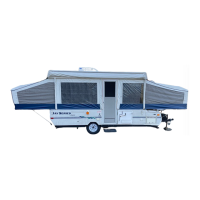
